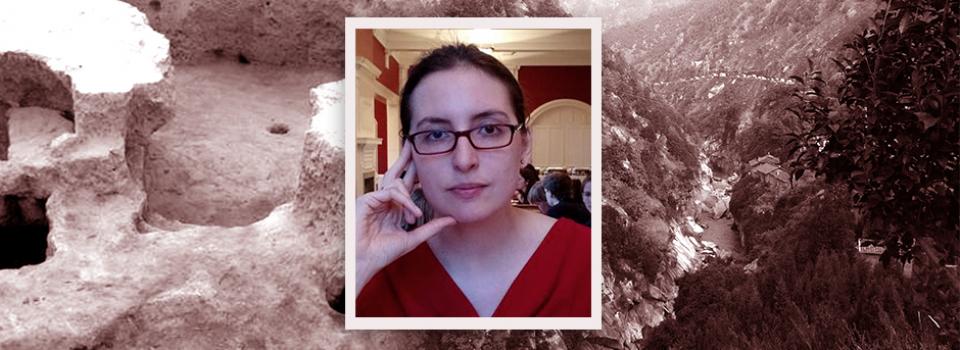联系我们
邮箱:shanghai.cga@nyu.edu
电话:+86 (21) 20595043
微信公众号:NYUShanghaiCGA
地址:
上海市浦东新区杨思西路567号
W822室

© 2024 All Rights Reserved

地点: 1250教室,上海纽约大学
日期:
4月17日,2017
时间: 12:15 to 13:30 CST
The identification of cultural groups in the archaeological record, and the mechanisms of contact between them, have been major topics of discussion in archaeology since its beginnings as a discipline. The methodological and theoretical aspects of these issues have so far largely been argued on the basis of ethnographic studies and social-anthropological theories. As the kind of information available to cultural anthropologists is very different from what the archaeologist is faced with, such studies are difficult to apply in archaeological research. More promising from the archaeological point of view is a discussion based on a concrete body of archaeological material. This dialogue with Dr. Anke Hein on cultural anthropology gives special focus to concrete archaeological material from the Liangshan region of southwest China.
The Liangshan region is located at the intersection of several cultural-geographic regions in Southwest China; not surprisingly, the archaeological material is highly varied as well, providing an ideal case study for research on mechanisms of cultural contact and their environmental preconditions. Dr. Hein will introduce this largely overlooked body of material, presenting evidence of outside contacts, their possible origin, and cultural and geographic preconditions for such an exchange. She argues that questions of cultural identity, inter-group contact, and human-environment interaction cannot be treated separately but have to be considered in combination. At the same time, the case at hand shows that the environment is not just a limiting or determining factor: even marginal environments can be used in a variety of ways and do not necessarily lead to conflict among neighboring populations. The emergence of contact networks and acceptance of foreign traits, cultural decisions are just as important as and sometimes even more important than geographic preconditions.
Anke Marion Hein is an anthropological archaeologist focusing on pre-historic and early historic China. Her main research interest lies with questions of inter-cultural contact and human-environment interaction, focusing geographically on the so-called border regions of China, which have been zones of interactions since early prehistoric times. Professor Hein has received a broad training in Archaeology, Chinese Studies, East Asian Art History, and Geography at various research institutions in Germany, China, and the United States, which provides her with the necessary background for such an interdisciplinary approach. After completing my doctoral studies at the University of California Los Angeles (UCLA) in 2013, she served as postdoctoral fellow at Hebrew University and at the University of Munich. In January 2016, Hein joined the faculty of the Institute of Archaeology, University of Oxford, where she is also affiliated with the Oxford China Centre and with St Hugh’s College.
Much of Dr. Hein’s research so far has focused on the mountains of Southwest China as an important intersection point of long-distance interactions reaching as far as Central Asia on the one hand and Southeast Asia on the other. Additionally, she has conducted ethnographic fieldwork on the Nuosu (Yi) ethnic group, their adaptation to the environment on the eastern rim of the Tibetan Plateau, and their interactions with other ethnic groups. Another interests concern burial data as a source of evidence for various forms of past identities. Choosing Southwest China as a case study, she has developed a new approach to mortuary archaeology that is appropriate for analyzing particularly complex and inhomogeneous bodies of data.
Dr. Anke Hein is turning her attention to another expression of group identities reflected in patterns of ceramic production and usage. In this case, she is focusing on Northwest China (mainly Gansu and Qinghai) during the middle Bronze Age that sees a great variety of ceramic traditions existing next to each other.
With colleague Jade d’Alpoim Guedes and colleagues from the Sichuan Provincial Institute of Archaeology, Sichuan University, and Beijing University, Dr. Hein is furthermore conducting research on Human Response To High Altitude Environmental Change on the eastern rim of the Tibetan Plateau.
本次活动主持为 Armin Selbitschka, Assistant Professor of Ancient Chinese History, Global Network Professor at NYU Shanghai.
致来访者:
• 须预约报名
• 须在学校入口处出示身份证
• 学校不提供停车服务
• 请从世纪大道1555号的南门入口处进入学校
• Taxi card
• 地铁:乘坐2/4/6/9号线,到世纪大道站下车,从6号出口出站
• 公交:乘坐169/987路公车,到世纪大道浦电路站下车
邮箱:shanghai.cga@nyu.edu
电话:+86 (21) 20595043
微信公众号:NYUShanghaiCGA
地址:
上海市浦东新区杨思西路567号
W822室

© 2024 All Rights Reserved